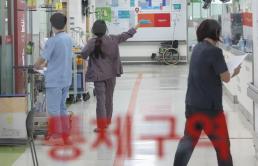Real gross domestic product (chained volume measure) increased by 1.4 percent compared with the previous quarter. This is also a 0.1 percentage point downward revision compared with the advance estimates released on July 26. The GDP estimates released today are based on more complete source data, from the industrial production index, the service industry activity index, etc., than were available for the advance estimates.
On the production side, the manufacturing sector recorded a 5.2 percent increase, mainly due to the growth in machinery equipment, fabricated metal products and automobile manufacturing.
The construction sector showed negative growth of 0.9 percent, owing to the sluggishness in residential-building construction.
Services rose 0.1 percent, reflecting increases in the transport & storage and health & social work sectors, which offset declines in the financial intermediation and the real estate and renting sectors.
On the expenditure side, private consumption rose by 0.8 percent, with the increased expenditures on non-durables, semi-durables and services offsetting the decrease in spending on durables.
Facilities investment increased by 9.1 percent, due mainly to the growth in investment in machinery such as semiconductor manufacturing equipment.
Construction investment shrank 3.6 percent, owing to the decline of investment in residential construction and civil engineering.
Exports of goods grew by 7.0 percent, led mainly by the increased exports of automobiles, semiconductors and machinery. Imports of goods, similarly, expanded 9.5 percent, centering on increases in metal product, machinery and transport equipment imports.
Real GDP (chained volume measure) increased by 7.2 percent year-on-year in the second quarter of 2010.
On the production side, manufacturing increased 18.0 percent and services 3.6 percent. Construction meanwhile declined by 0.5 percent.
On the expenditure side, facilities investment grew by 30.2 percent and exports of goods by 14.9 percent. Construction investment shrank by 2.9 percent.
Domestic demand (excluding inventories) increased by 4.5 percent.
Ⅱ. Gross National Income and the Gross Saving Ratio
Nominal gross national income (GNI) increased in the second quarter of 2010 by 2.2 percent over the previous quarter.
Real gross national income increased by just 0.5 percent, as trading losses expanded with the worsening of the terms of trade compared to the previous quarter.
In terms of year-on-year growth, real GNI increased by 5.4 percent.
The GDP deflator increased by 2.6 percent in the second quarter of 2010 compared with the same period of the previous year.
The gross saving ratio (gross saving/gross national disposable income) increased from 30.8 percent in the first quarter to 31.7 percent in the second.
The gross domestic investment ratio (gross capital formation/GNDI) increased from 28.4 to 29.4 percent over the same period.
[Source: The bank of Korea]
©'5개국어 글로벌 경제신문' 아주경제. 무단전재·재배포 금지


![[르포] 중력 6배에 짓눌려 기절 직전…전투기 조종사 비행환경 적응훈련(영상)](https://image.ajunews.com/content/image/2024/02/29/20240229181518601151_258_161.jpg)



